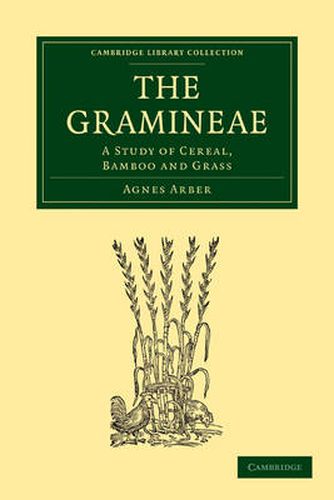Readings Newsletter
Become a Readings Member to make your shopping experience even easier.
Sign in or sign up for free!
You’re not far away from qualifying for FREE standard shipping within Australia
You’ve qualified for FREE standard shipping within Australia
The cart is loading…






Agnes Arber (1879-1960) was a prominent British botanist specialising in plant morphology and comparative anatomy. In 1946 she became the first female botanist to be elected a Fellow of the Royal Society. First published in 1934, this volume provides a detailed comparative study of the Gramineae family of plants, which includes cereals, grasses and bamboos. Arber focuses on the general morphological features of these plants as shown by anatomical analysis, describing their life cycles, reproductive and vegetative phases, and embryology. The Gramineae family contains vitally important food plants such as wheat, millet and rice, leading Arber to begin her study with the history of human interaction with these plants. It was the first published general description of these important plants, and remains a classic example of comparative anatomical analysis. The book contains over 200 figures and an extensive bibliography.
$9.00 standard shipping within Australia
FREE standard shipping within Australia for orders over $100.00
Express & International shipping calculated at checkout
Agnes Arber (1879-1960) was a prominent British botanist specialising in plant morphology and comparative anatomy. In 1946 she became the first female botanist to be elected a Fellow of the Royal Society. First published in 1934, this volume provides a detailed comparative study of the Gramineae family of plants, which includes cereals, grasses and bamboos. Arber focuses on the general morphological features of these plants as shown by anatomical analysis, describing their life cycles, reproductive and vegetative phases, and embryology. The Gramineae family contains vitally important food plants such as wheat, millet and rice, leading Arber to begin her study with the history of human interaction with these plants. It was the first published general description of these important plants, and remains a classic example of comparative anatomical analysis. The book contains over 200 figures and an extensive bibliography.